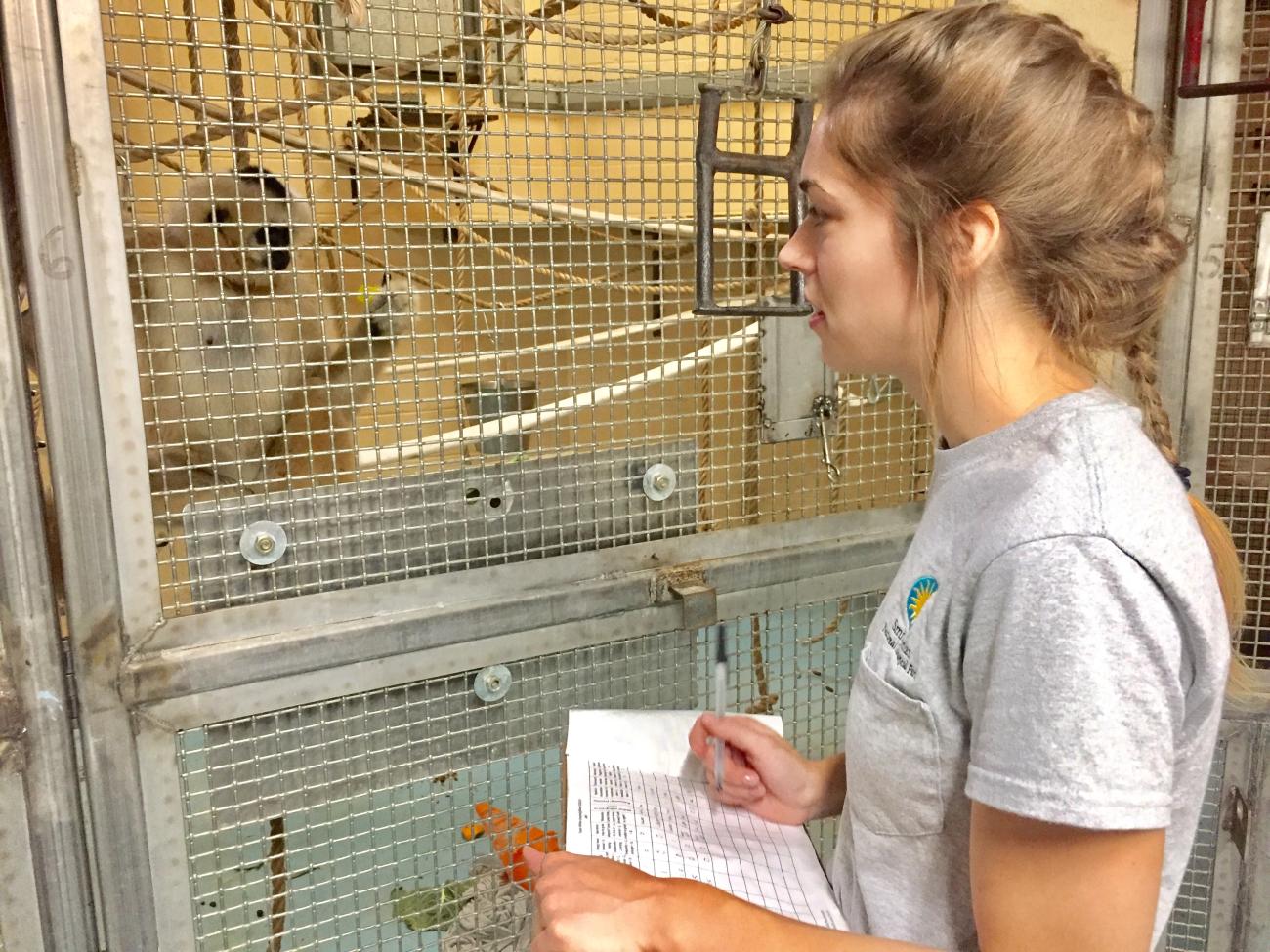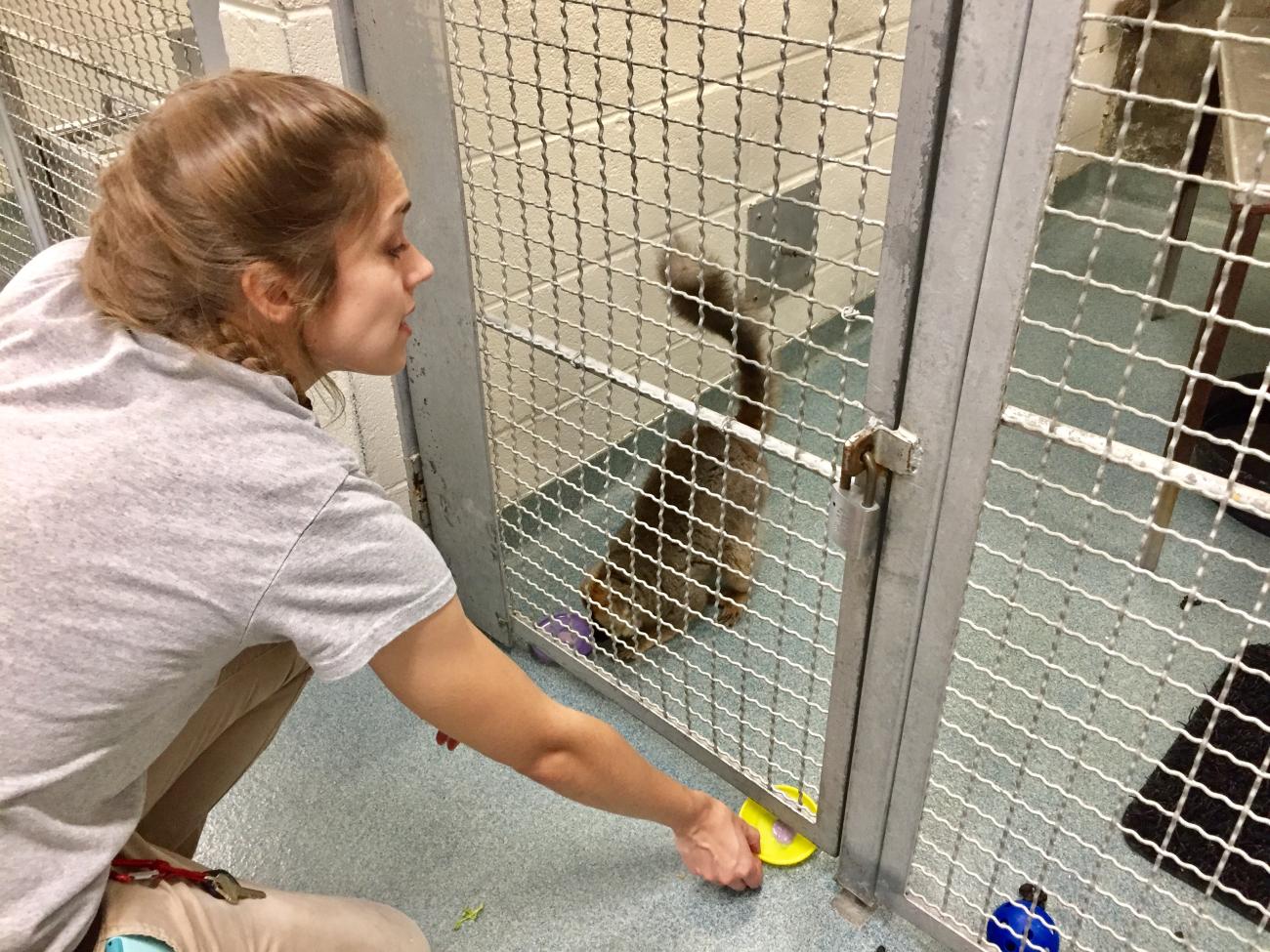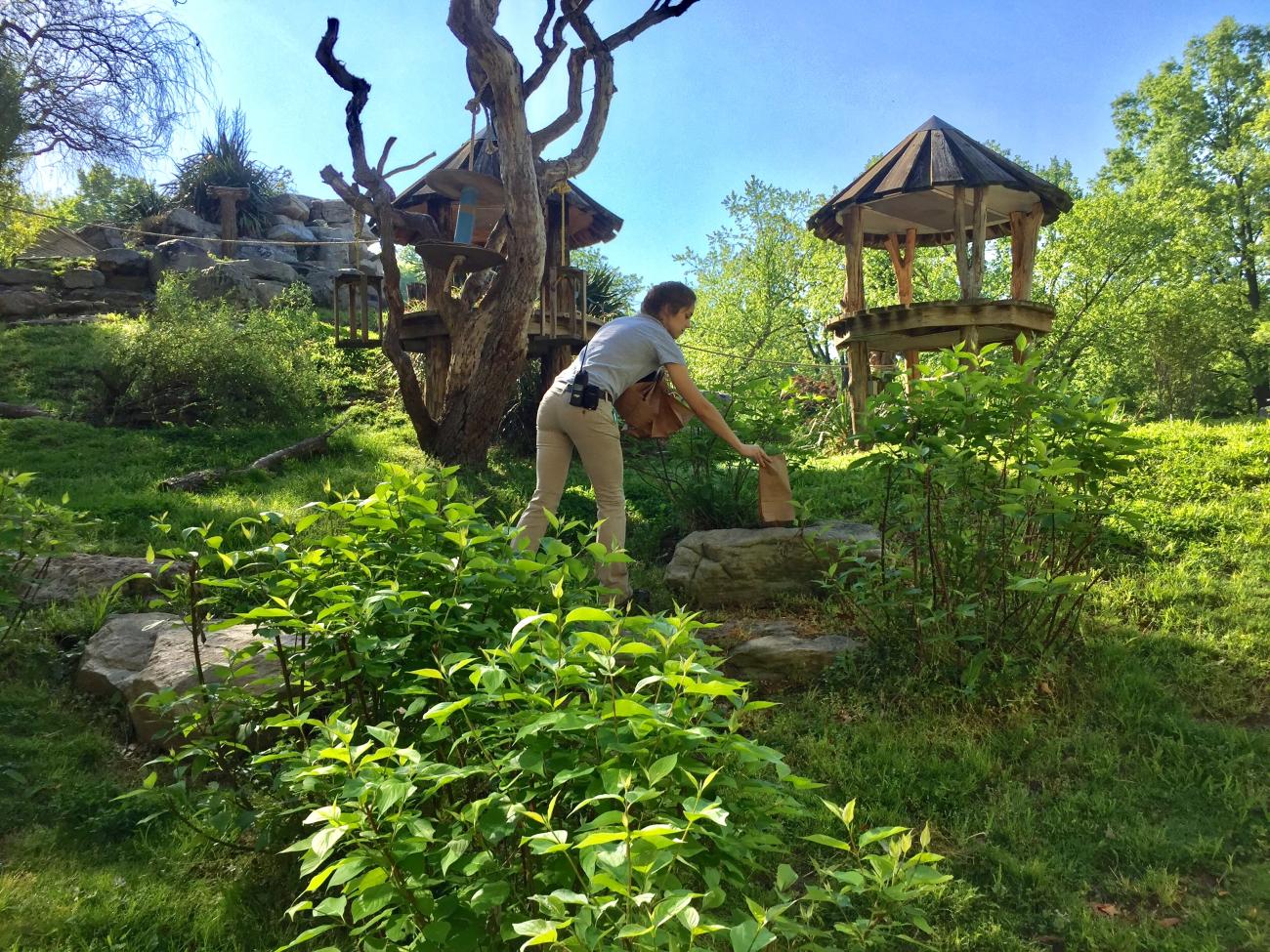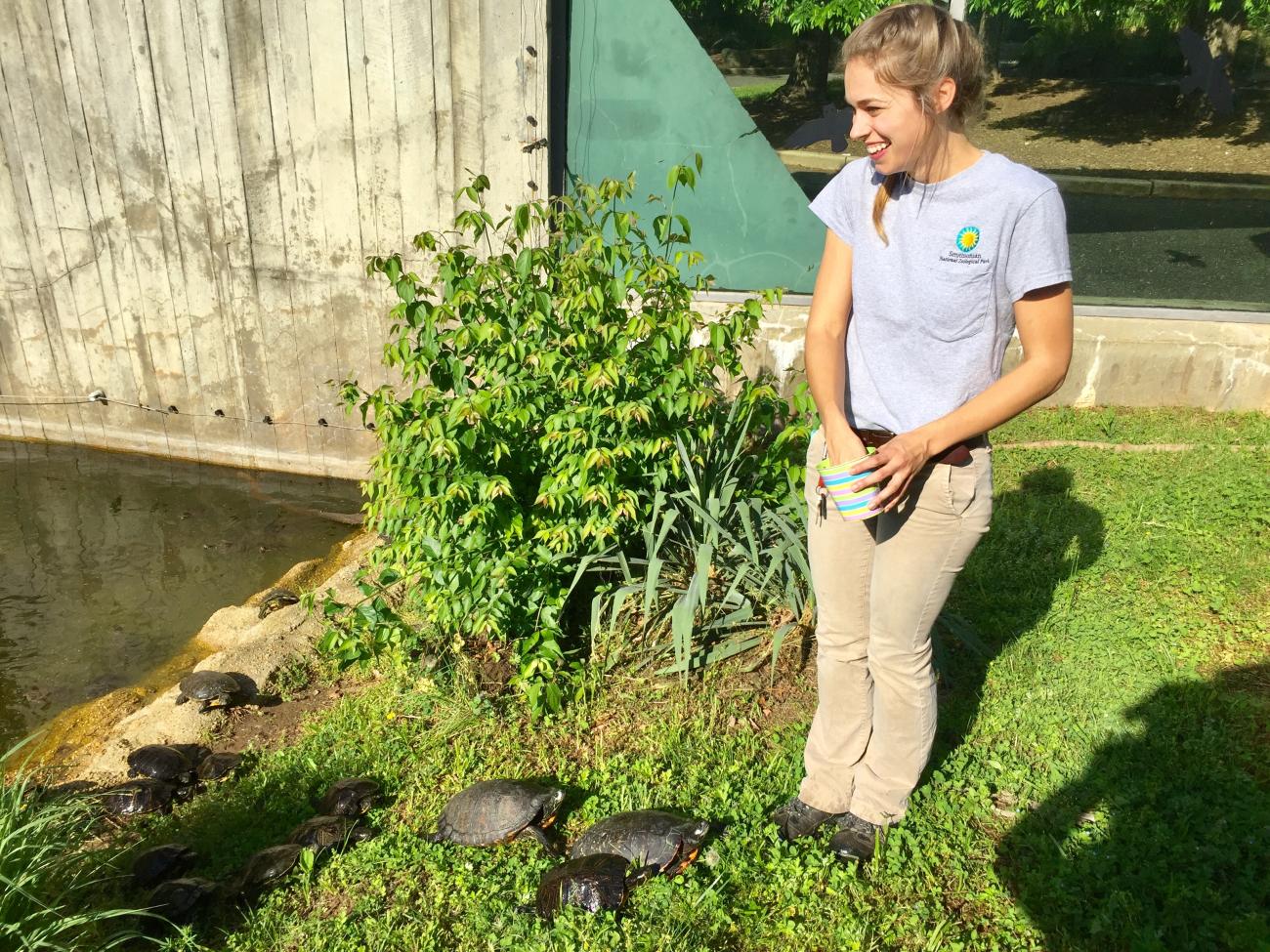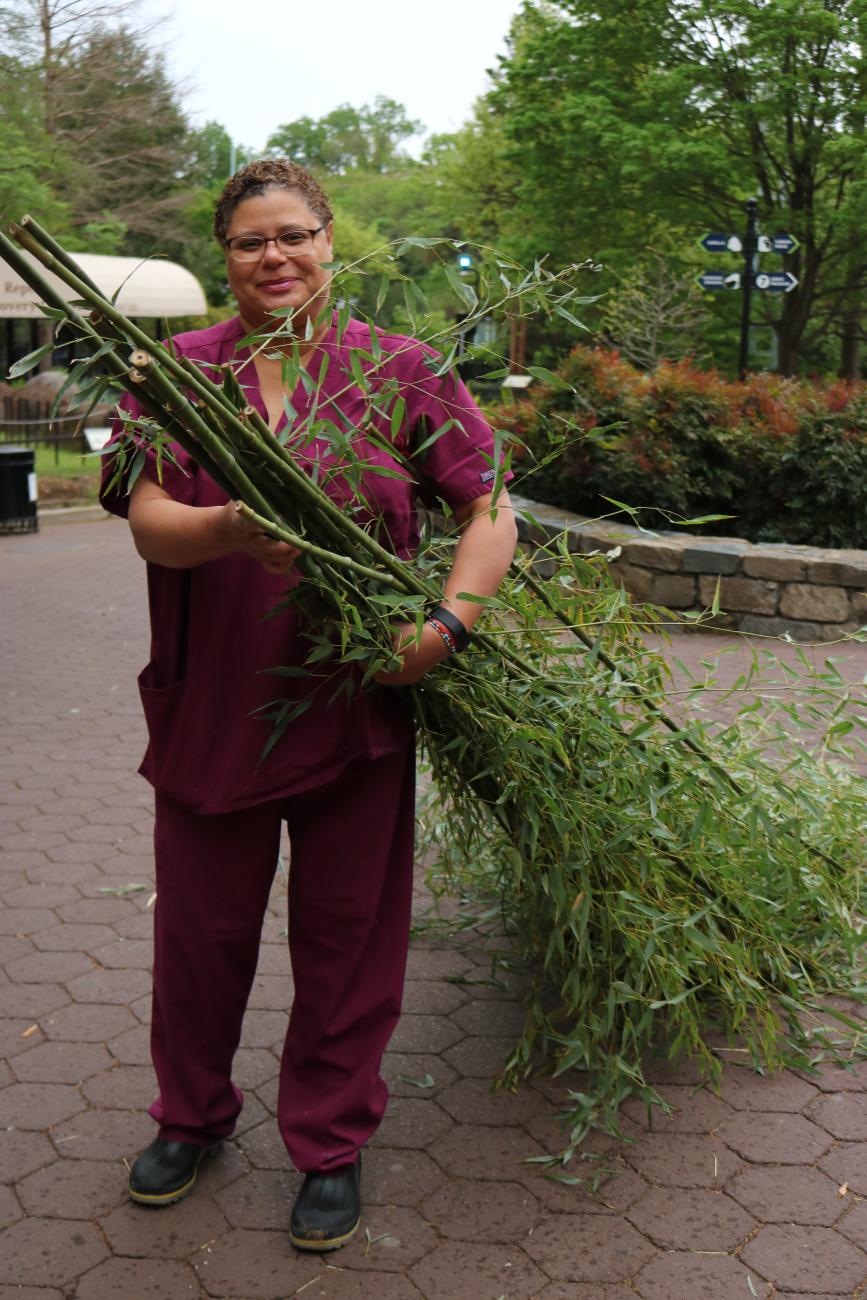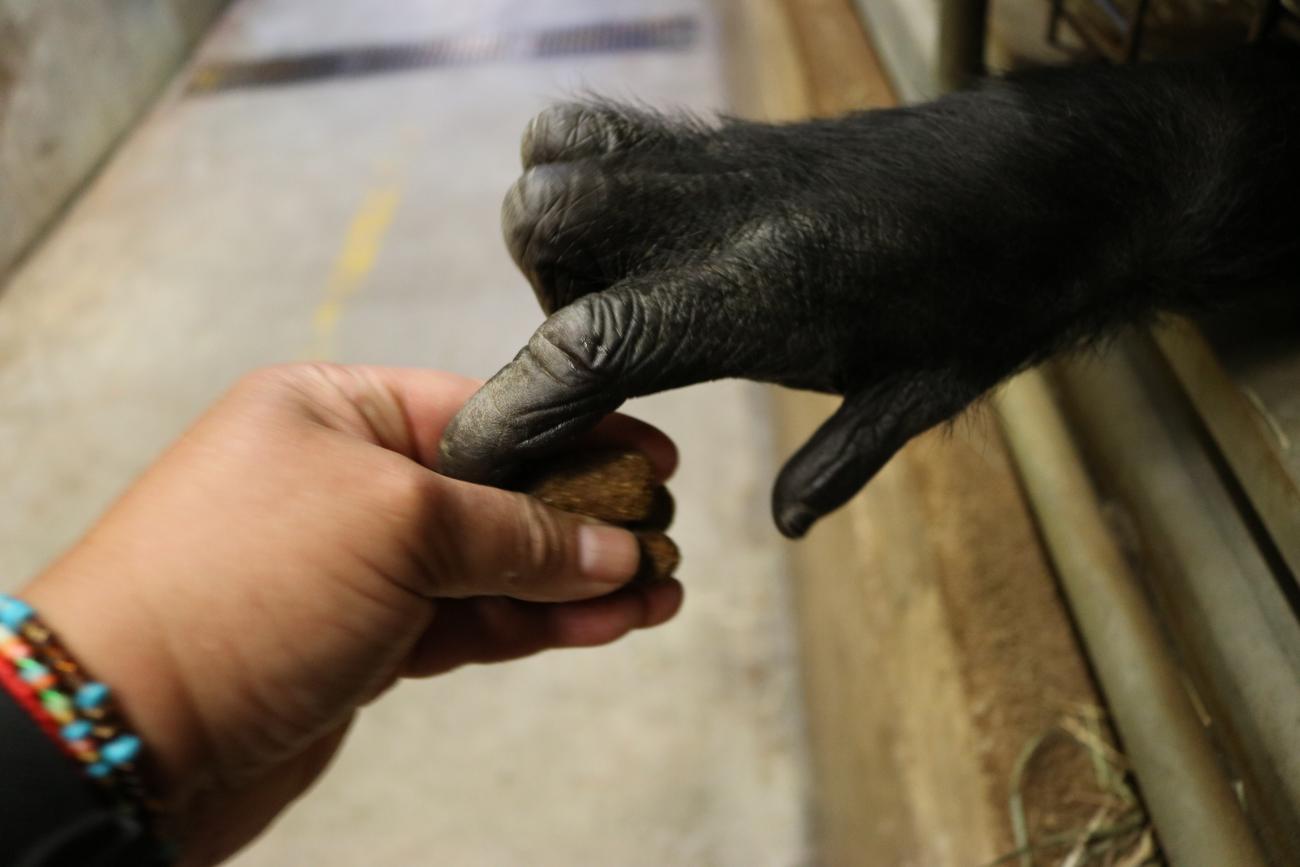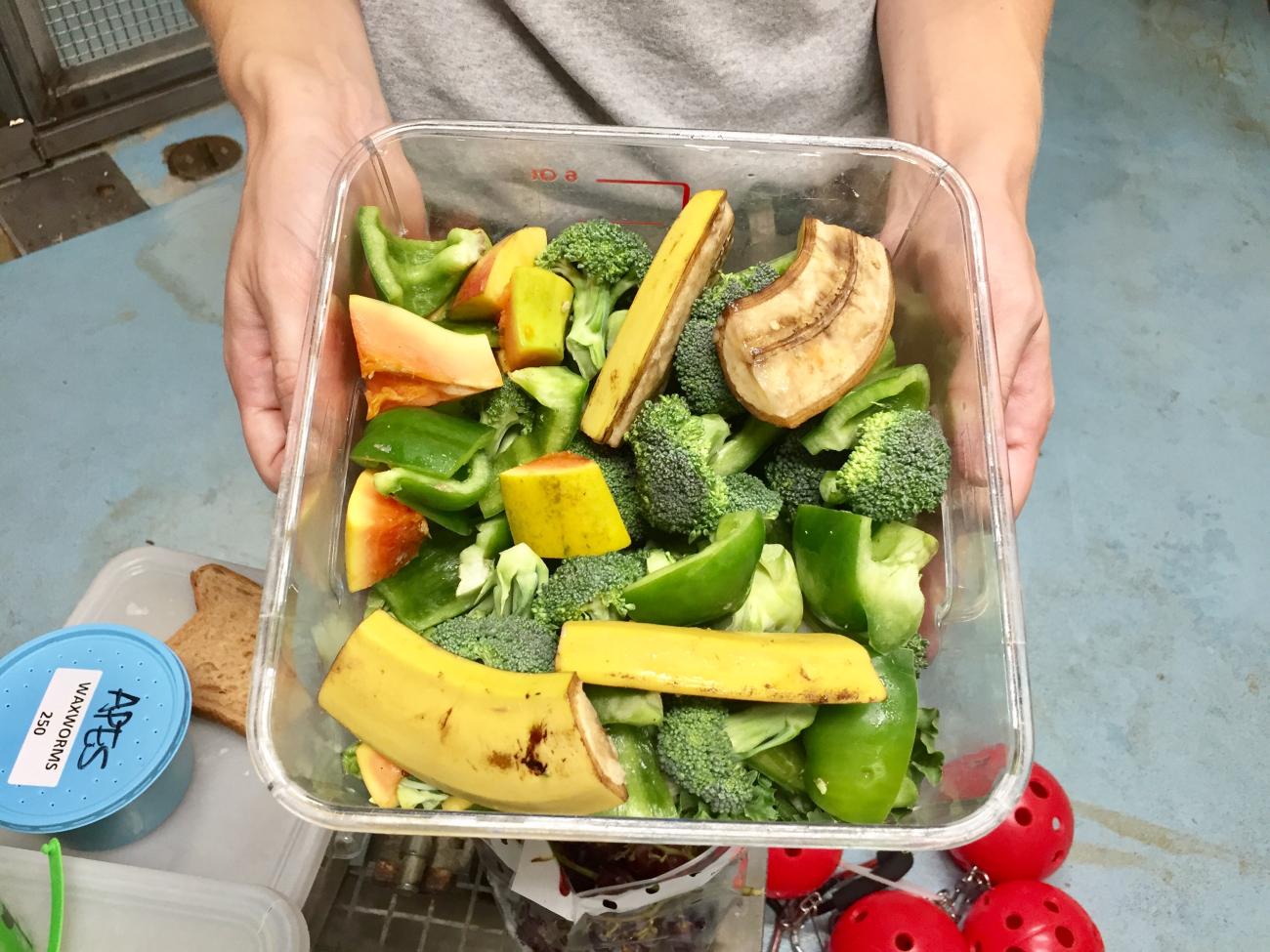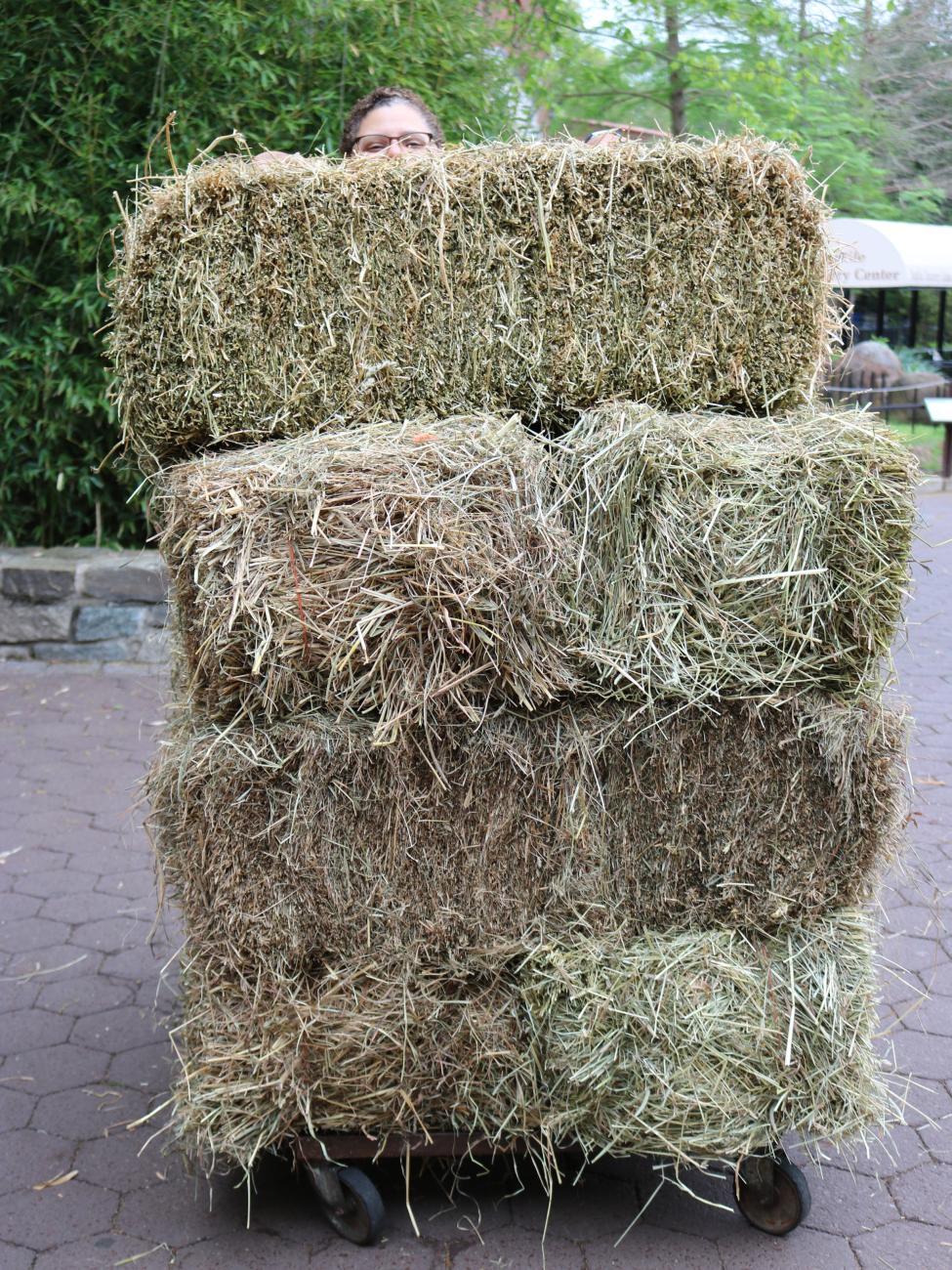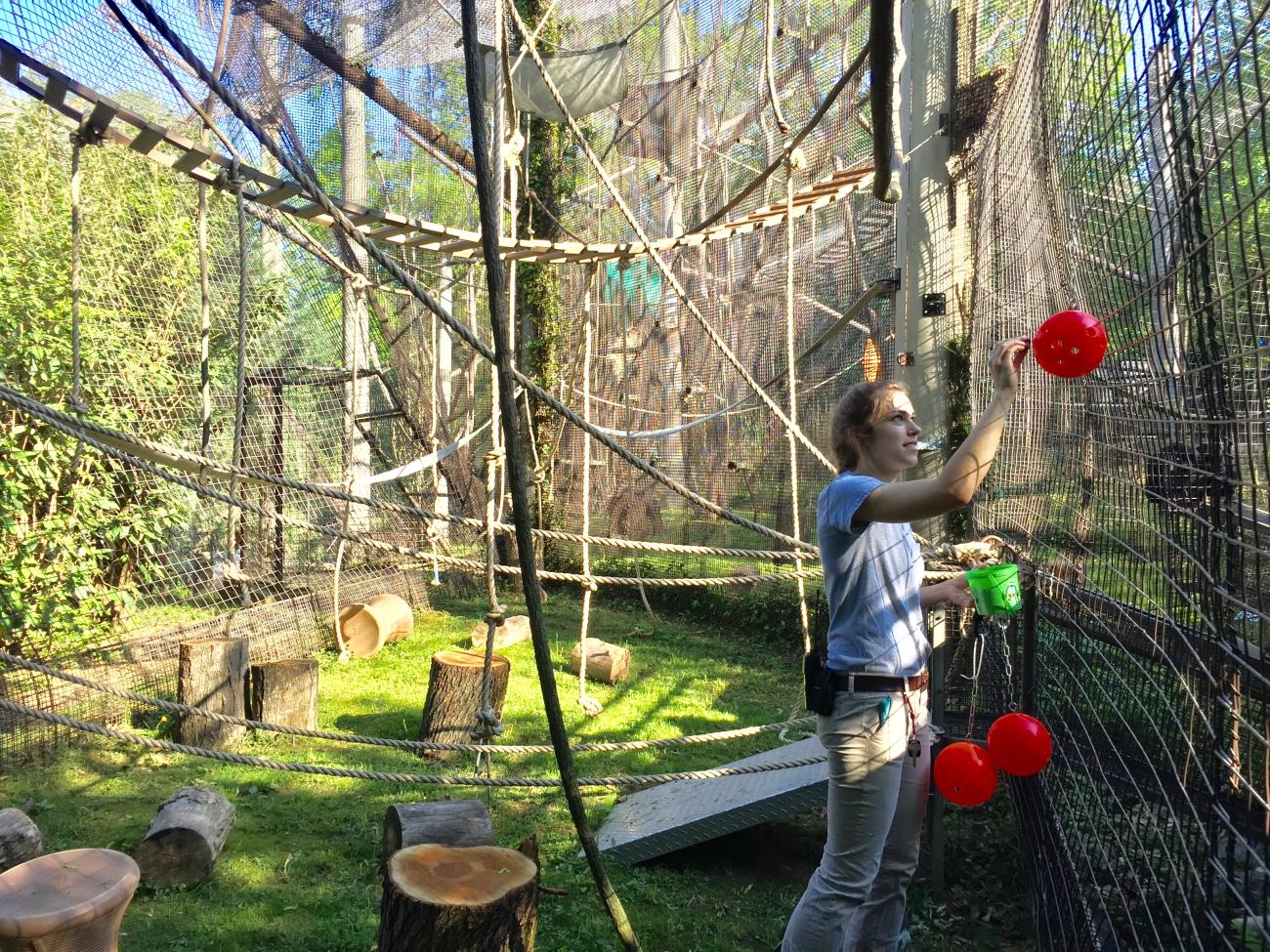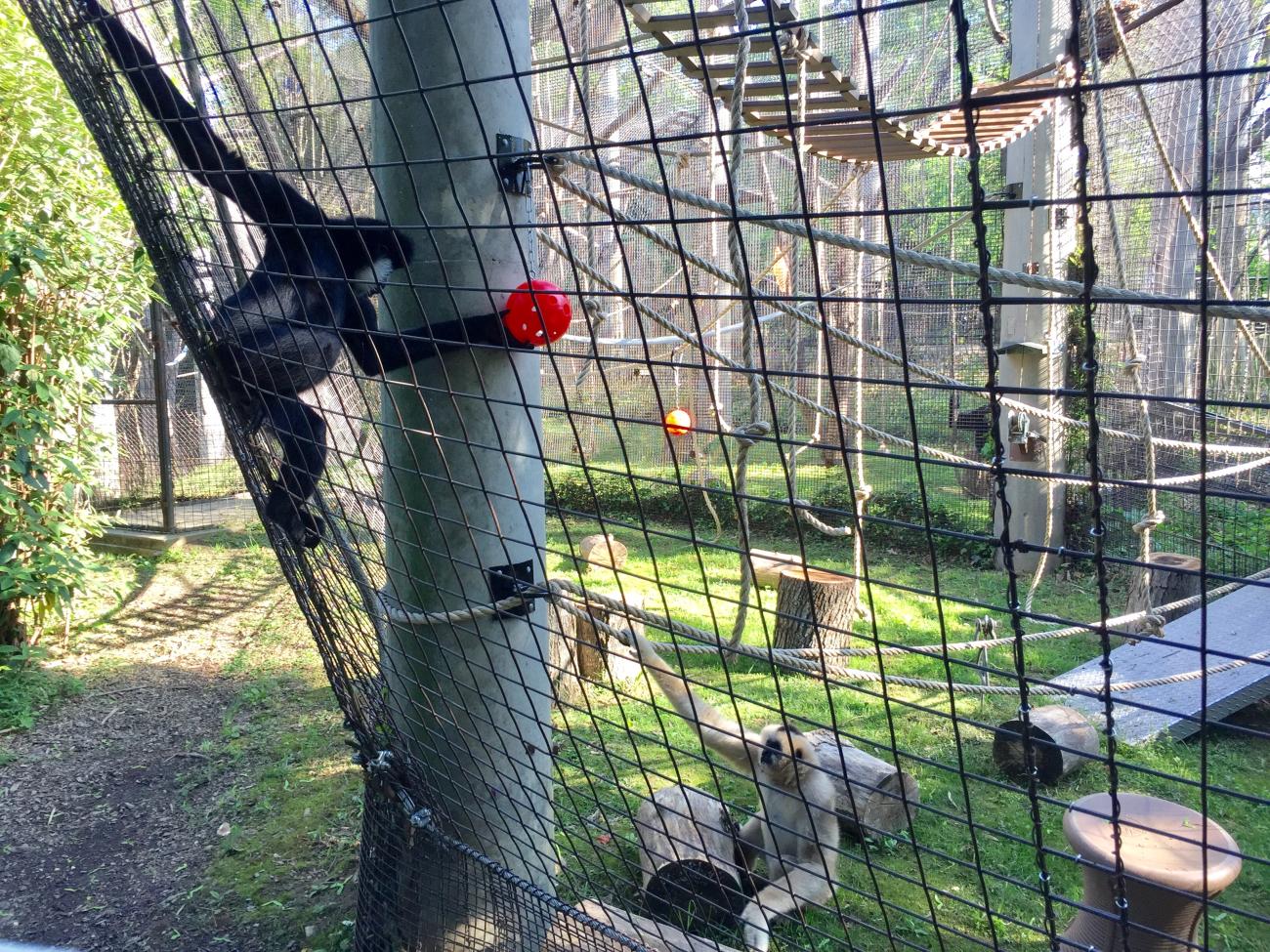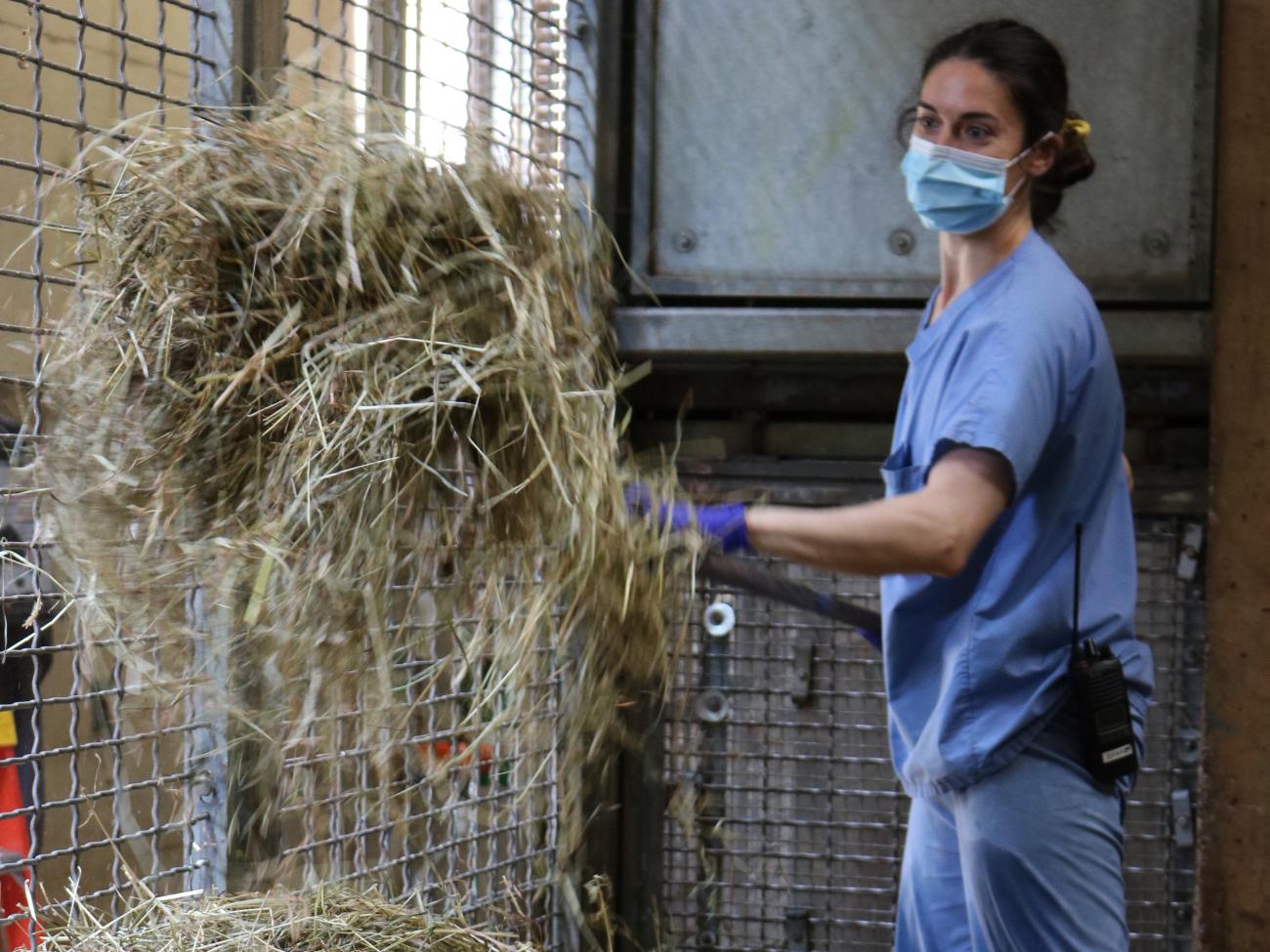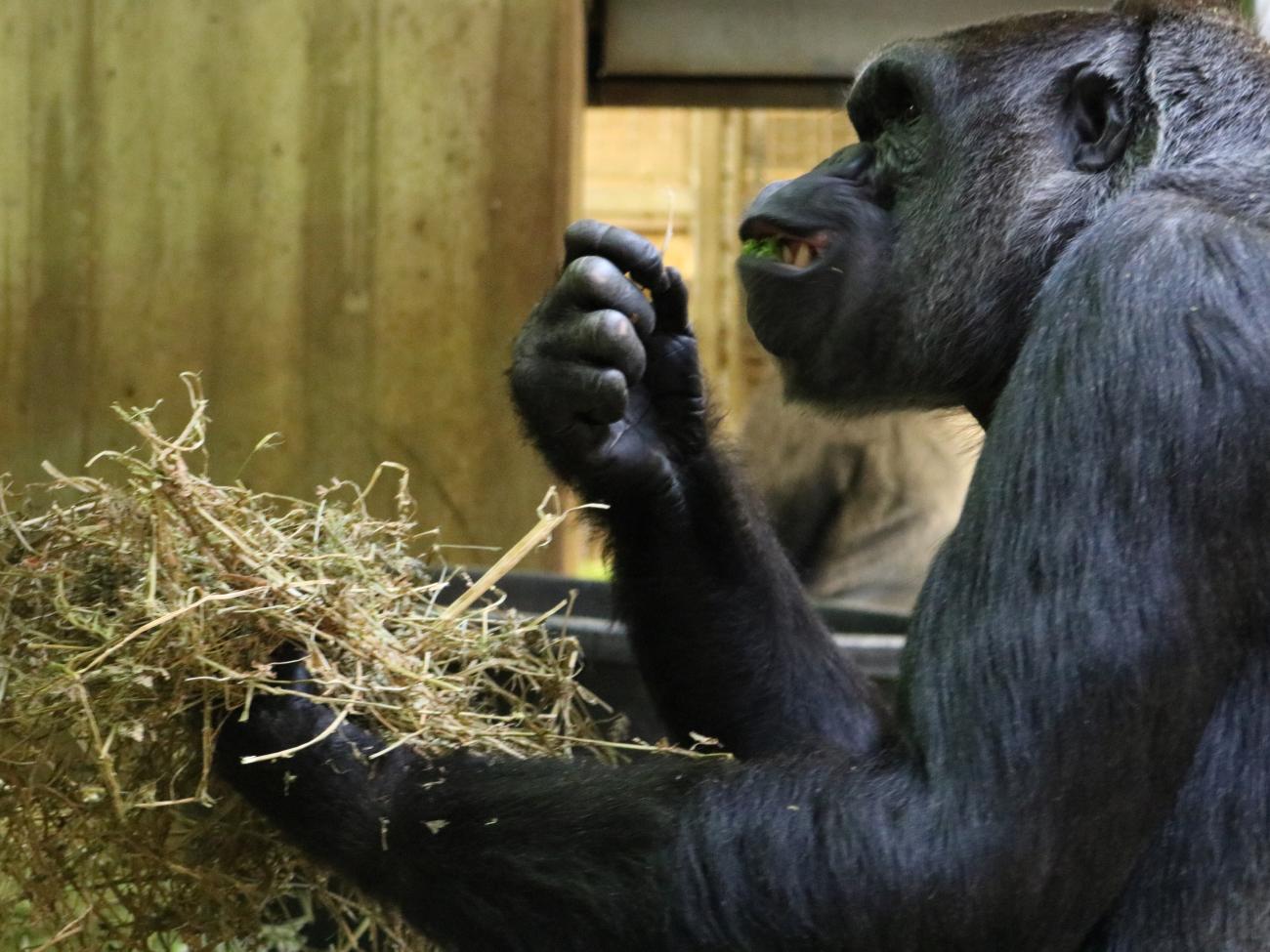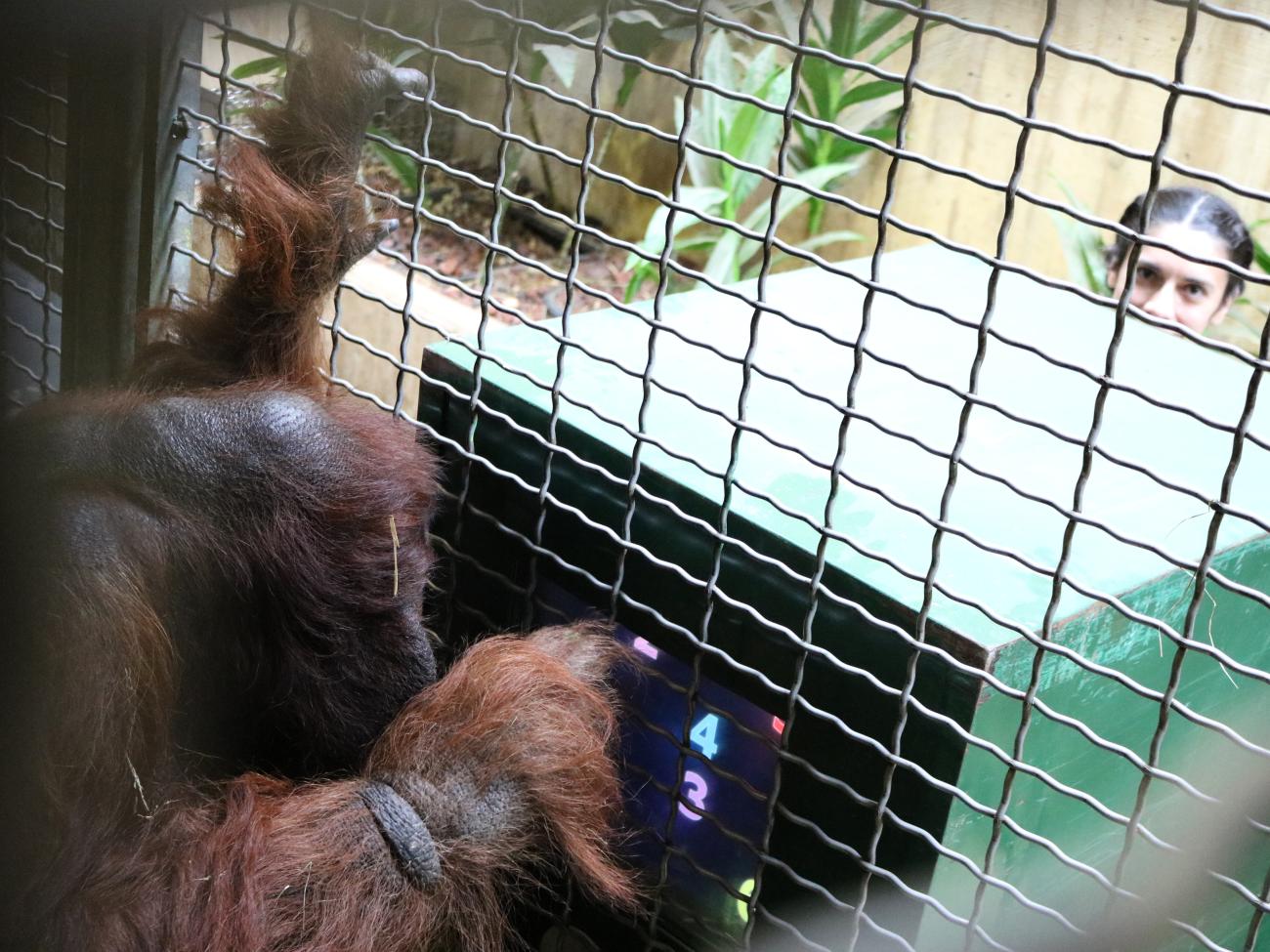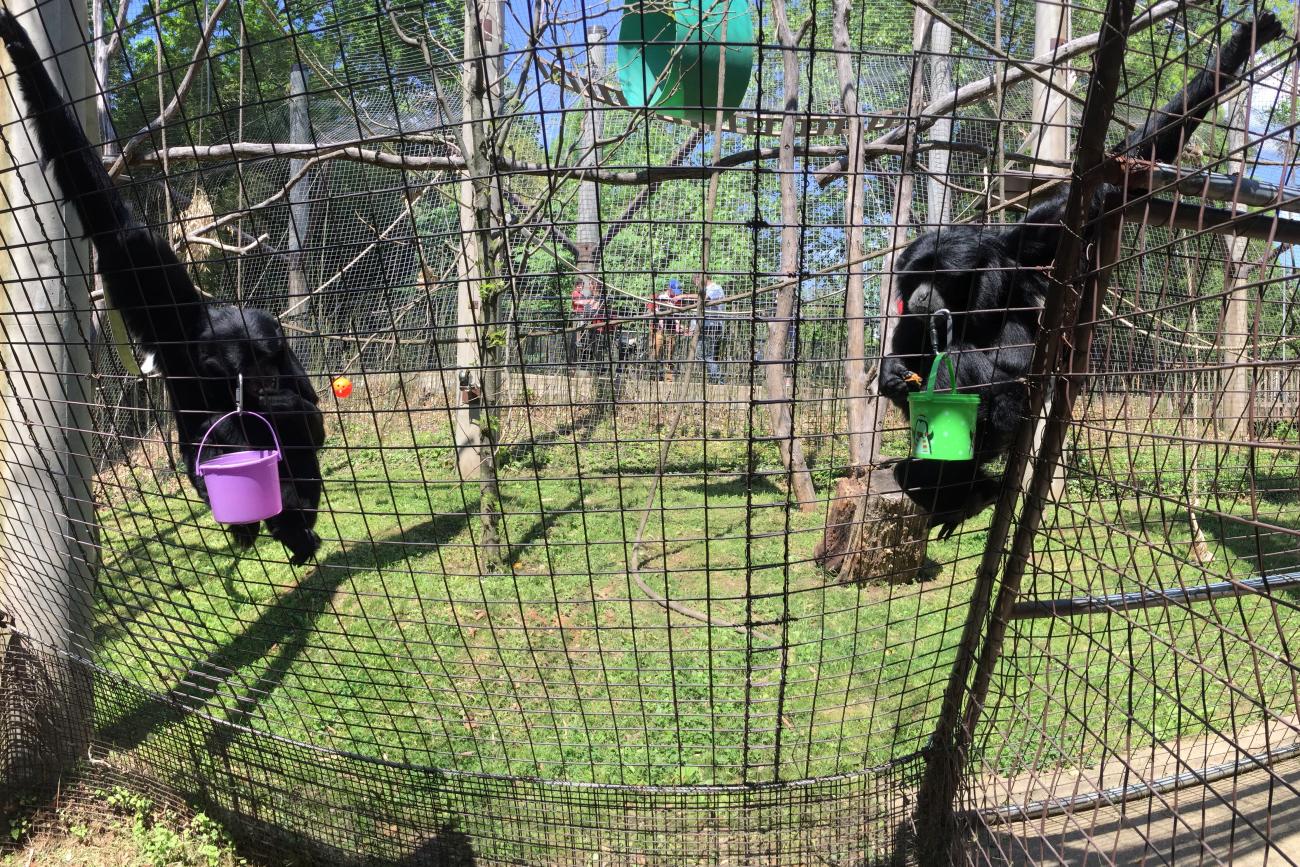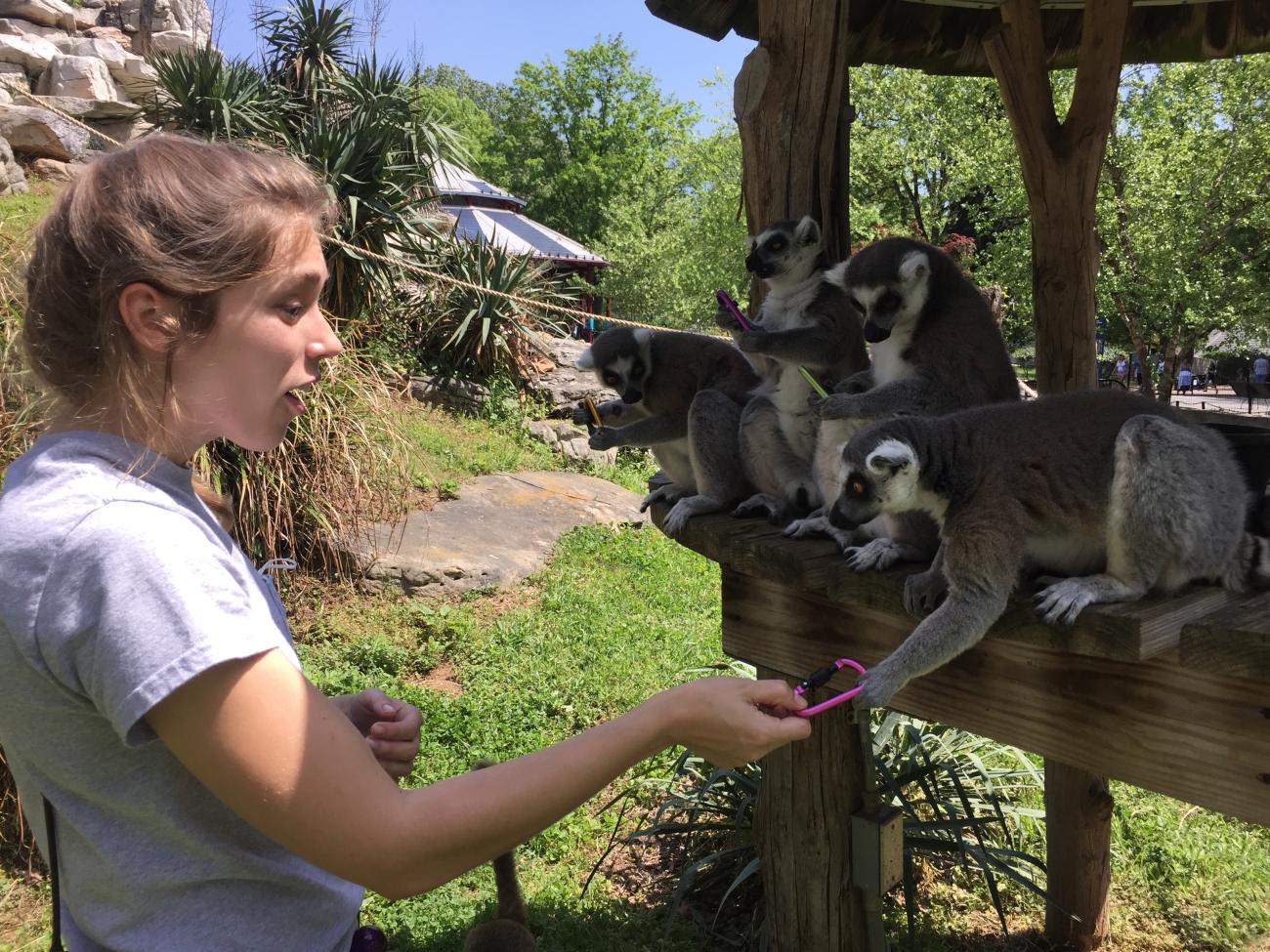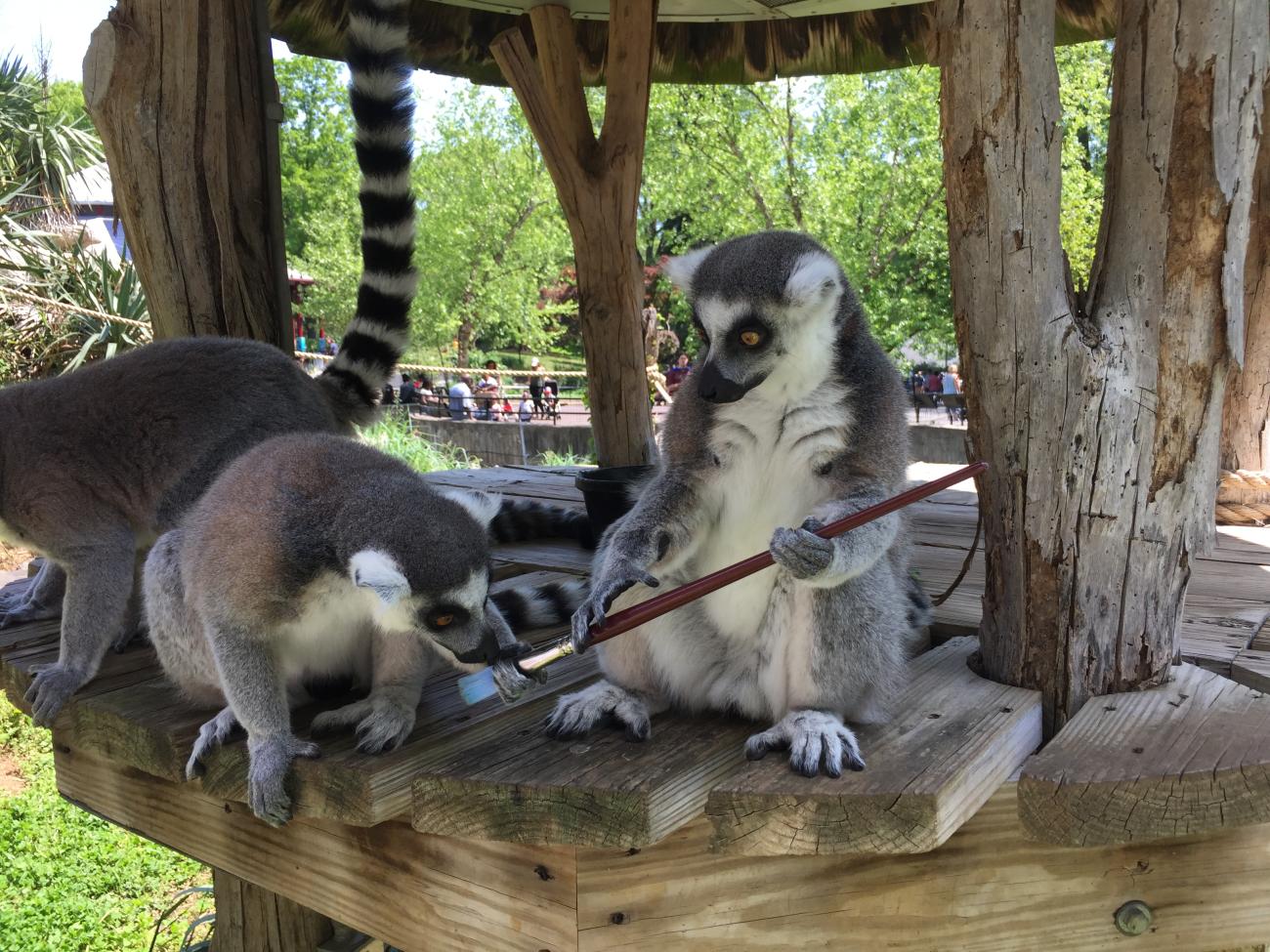A Day in the Life of a Primate Keeper
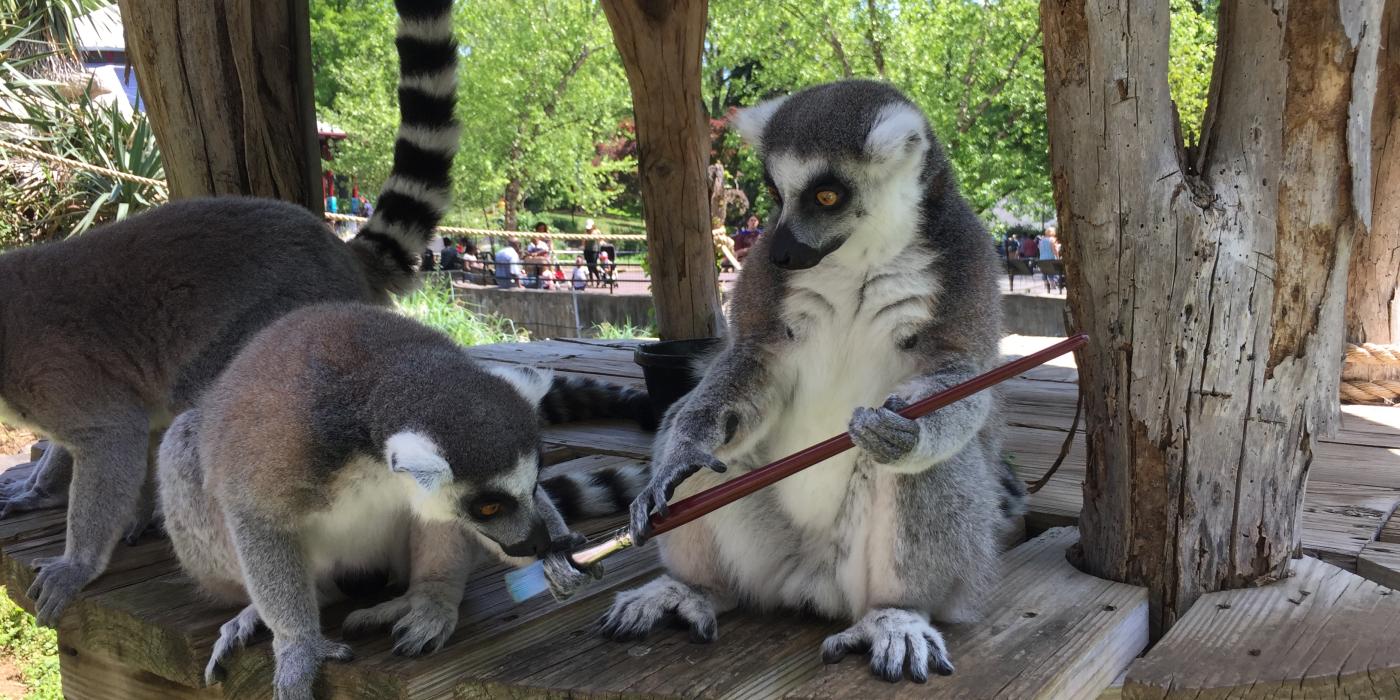
Ever wondered what it would be like to care for an endangered animal? For the team who works with the Smithsonian's National Zoo's primates-- gibbons, siamangs, lemurs, orangutans and gorillas, among others-- the job entails thinking of creative ways to provide these intelligent animals with physically and mentally stimulating activities throughout the day. Go behind the scenes with keepers Emily Bricker, Melba Brown and Alexandra Reddy as they care for some of the most endangered primates in the world.
A checkup for Tuyen
“Three times a day, we record 10-year-old female white-cheeked gibbon Tuyen’s behavior, mobility and activity on a data sheet. This information helps keepers and veterinarians evaluate her health and assess any changes we may need to make to her medication. Sometimes, it takes a little creativity to convince an animal to take its medicine. Our white-cheeked gibbons will happily take their medicine—as long as it is cleverly disguised in a bite of banana. ” – Emily Bricker, animal keeper
A Spoonful of Yogurt
“Our 30-year-old female red-fronted lemur, Flare, receives medication daily in her indoor enclosure. To make her medication more appetizing, I mix it in a small amount of yogurt and plate it on a miniature Frisbee. Her companion, Red Oak, doesn’t take any medication at the moment, but we give him some yogurt, too, so that he doesn’t feel left out.” – Emily Bricker, animal keeper
Playing with Food
“Because we have eight lemurs—four ring-tailed, two black-and white, and two red-fronted—we spend a lot of time preparing food enrichment for them. I separate their favorite food (papaya and mango) into eight paper bags, one for each lemur. Then, I put their primate biscuits and vegetables (sweet potato, greens, corn and broccoli) into bowls. I place the enrichment all over the yard at Lemur Island. We want the lemurs to exercise and use cognitive skills to figure out how to get at the food in the bags.”– Emily Bricker, animal keeper
Treats for Turtles
“It’s quite a sight when the turtles know it’s feeding time! Many of them come rushing out of the water and onto the shore. They gobble up their reptile pellets.”—Emily Bricker, animal keeper
Browse Delivery
Breakfast Biscuits
“Each of our gorillas and orangutans receives a few nutritious biscuits in the morning as part of their daily breakfast. The biscuits easily pass through the mesh from keeper to ape (in this case, a western lowland gorilla). While the apes nosh, keepers gauge the animals’ appetites and closely examine them for any cuts, scrapes, or health issues that need to be addressed.” – Melba Brown, animal keeper
The Most Important Meal of the Day
“Our Department of Nutrition made a delicious fruit and vegetable salad for white-cheeked gibbons Sydney and Tuyen. Today, they’re having a mix of leafy greens, broccoli, green peppers, papaya, banana and primate chow (though we offer them different fruits throughout the week to keep their diet interesting). Every morning and afternoon, we put a part of their diet into enrichment and spread the rest throughout their enclosure to encourage them to use their natural foraging skills.” – Emily Bricker, animal keeper
Hay Delivery
“The Zoo’s Department of Nutrition delivers Timothy and alfalfa hay bales to the Great Ape House. Keepers wheel the bushels inside and distribute the hay among the enclosures. We’ve noticed that the apes prefer to eat the alfalfa hay and gather the Timothy hay in piles to use as bedding.” – Melba Brown, animal keeper
Preparing for playtime
“The gibbons receive many varieties of enrichment. This morning, I’m setting up forage feeders—heavy duty plastic balls with holes drilled in them. I fill the balls with grapes, and the gibbons have to manipulate the toy to get the fruit hidden inside.” – Emily Bricker, animal keeper
A Foraging Excursion for Two
“When we let the white-cheeked gibbons outside, they both head straight for the enrichment feeders. Sydney, our 17-year-old male, arrived at the forage ball first. While he collects grapes from above, Tuyen sits patiently below, collecting the stray ones that fall on the ground.” – Emily Bricker, animal keeper
Cleaning Crew
Morning Forage
“Our 14-year-old female western lowland gorilla, Calaya, takes a taste of her diet—greens and alfalfa hay. Keepers encourage the apes to forage by scattering food throughout the enclosures.” – Melba Brown, animal keeper
Testing How Apes Think
“We often give the gorillas and orangutans the option to participate in touch-screen computer research. Our 20-year-old Bornean orangutan Kyle eagerly participates in these projects. The study pictured here helps us learn about orangutan memory. Numbers are presented on the touch-screen, randomly generated by the computer program. Kyle is required to touch the numbers in the correct sequence using both trial and error learning, and memory recall from previous sessions. When he correctly touches the sequence displayed on the screen, an audio recording plays and he receives two grapes—one of his favorite rewards!”—Alexandra Reddy, animal keeper
Afternoon Snack
“Just like the white-cheeked gibbons, siamangs Bradley and Ronnie forage for fruits and veggies throughout the day. But, they also get baked veggies in the afternoon. Today, the pair received a small bucket of sweet potatoes, which I clipped to the mesh of their outdoor enclosure.” – Emily Bricker, animal keeper
Team Training (part 1)
“To keep our lemurs entertained throughout the day, we give them a wide variety of enrichment to get them up and moving. Enrichment goes hand-in-hand with training, which is not only good mental stimulation for the lemurs but also gives me an opportunity to examine the animals up close. In this photo, I’m training our ring-tailed lemurs—Southside Johnny, Tom Petty, Bowie and Birch—to hold carabineers and stand still for a short period of time. This helps facilitate a lot of training, especially when teaching them to sit still on a scale. If they hang on to the carabineers, they get raisins as a reward.” – Emily Bricker, animal keeper
Team Training (part 2)
“Sometimes, the lemurs aren’t patient and choose to train together! This is Bowie and Southside Johnny sharing a paint brush. Eventually, my goal is to teach the lemurs to paint, which is another fun enrichment activity that many of the Zoo’s primates enjoy. An important part of putting paint to canvas is acquainting the lemurs to the tools they’ll need—a brush, canvas and paint. They can be afraid of new things, so we help them ease into this activity by introducing one tool at a time.” – Emily Bricker, animal keeper
This story appears in the May 2017 issue of National Zoo News. Help keepers purchase toys and other items that enhance Zoo animals' lives; make a donation to the Animal Enrichment Program.
